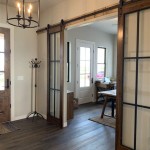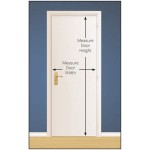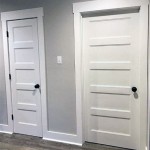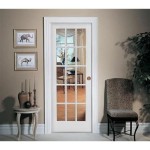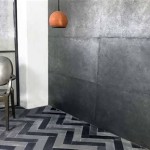Modern Colors To Paint A House Interior
The selection of interior paint colors profoundly impacts the atmosphere and perceived size of a home. Modern design trends favor palettes that are both aesthetically pleasing and conducive to creating a comfortable and functional living space. Understanding the current color trends and their potential effects on different rooms is crucial for homeowners seeking to update their interiors. This article provides an in-depth analysis of modern interior paint colors, their applications, and the factors to consider when making color choices.
Neutral Color Dominance: Evolving Beyond Traditional Beige
Neutral colors continue to be a popular choice for interior walls, forming a versatile backdrop that allows for flexibility in furniture and décor. However, the definition of "neutral" has expanded beyond the traditional beige and white. Modern neutral palettes incorporate a wider range of tones, including warm grays, soft greiges (a blend of gray and beige), and muted earth tones. These colors offer a sophisticated alternative to stark white and provide a sense of warmth and depth to a room.
Warm grays, in particular, have gained considerable popularity. These grays possess subtle undertones of brown or red, which prevent them from feeling cold or sterile. They pair well with both warm and cool accents, making them incredibly adaptable. Examples include "Agreeable Gray" and "Revere Pewter," both widely recognized for their versatility and ability to complement various design styles.
Greiges, as the name implies, offer a balance between gray and beige. They provide the calming effect of gray with the warmth of beige, making them ideal for creating a welcoming and comfortable atmosphere. They are particularly effective in living rooms and bedrooms, where a sense of relaxation is desired. Popular greiges include "Edgecomb Gray" and "Balboa Mist."
Muted earth tones, such as soft olive greens, muted browns, and terracotta hues, are gaining traction as homeowners seek to incorporate natural elements into their interiors. These colors evoke a sense of tranquility and connection to the outdoors. They work well in spaces where a calming and grounding atmosphere is desired, such as home offices and bedrooms. When selecting earth tones, it is important to consider the amount of natural light in the room, as some shades may appear darker in dimly lit spaces.
The strategic application of neutral colors can also influence the perceived size and shape of a room. Lighter neutrals can make a small room feel larger and more open, while darker neutrals can add depth and drama to a larger space. Accent walls painted in a contrasting neutral color can create a focal point and add visual interest. It's crucial to consider the existing architectural features and the overall design aesthetic when choosing neutral paint colors.
The Rise of Bold Accents: Injecting Personality and Energy
While neutral colors often form the foundation of modern interior design, the strategic use of bold accent colors allows homeowners to inject personality and energy into their spaces. These accent colors can be incorporated through painted walls, furniture, artwork, and accessories. Current trends favor jewel tones, deep blues and greens, and vibrant pops of color.
Jewel tones, such as emerald green, sapphire blue, and ruby red, are rich and luxurious colors that can add a touch of sophistication to any room. These colors are particularly effective in smaller doses, such as on an accent wall or in decorative accessories. They pair well with neutral backdrops, allowing them to stand out and create a focal point. When using jewel tones, it is important to consider the existing lighting and décor to ensure a cohesive and balanced look.
Deep blues and greens are versatile colors that can create a sense of calm and tranquility, while also adding depth and dimension. Navy blue, in particular, has become a popular choice for accent walls and cabinetry. It offers a sophisticated alternative to black and pairs well with both light and dark neutrals. Forest green and teal are also gaining popularity, offering a refreshing and nature-inspired alternative to traditional blues. These colors work well in bedrooms, living rooms, and home offices.
Vibrant pops of color, such as coral, mustard yellow, and bright orange, can add a playful and energetic touch to a room. These colors are best used sparingly, as they can be overwhelming if overused. They are particularly effective in accent pieces, such as throw pillows, artwork, and rugs. When using vibrant colors, it is important to consider the overall color scheme and to ensure that the colors complement each other. Color theory principles, such as complementary and analogous color schemes, can be helpful in creating a balanced and harmonious look.
The placement of accent colors is also crucial. Accent walls can be used to highlight architectural features or to create a focal point in a room. Painting a door or window frame in a bold color can add a touch of whimsy and personality. Small pops of color can be incorporated through accessories, such as throw pillows, artwork, and lamps. The key is to use accent colors intentionally and strategically to create a balanced and visually appealing space.
Considering Practical Factors: Light, Room Size, and Personal Style
Beyond current trends, several practical factors must be considered when selecting interior paint colors. These factors include the amount of natural light in the room, the size of the room, and the homeowner's personal style. Ignoring these factors can result in a space that feels unbalanced, uncomfortable, or simply not reflective of the homeowner's preferences.
Natural light plays a significant role in how colors appear. In rooms with ample natural light, colors will appear brighter and more vibrant. In dimly lit rooms, colors may appear darker and more muted. It is important to test paint samples in the room under different lighting conditions before making a final decision. This will help to ensure that the chosen color looks as expected in the space.
The size of the room is another important consideration. Lighter colors tend to make a room feel larger and more open, while darker colors can make a room feel smaller and more intimate. In small rooms, it is generally best to use lighter colors on the walls and ceiling to maximize the sense of space. Darker colors can be used as accents to add depth and interest. In larger rooms, darker colors can be used more liberally to create a cozy and inviting atmosphere.
Personal style is perhaps the most important factor to consider when selecting interior paint colors. The colors chosen should reflect the homeowner's individual tastes and preferences. It is important to consider the existing furniture, décor, and architectural features when making color choices. The goal is to create a cohesive and harmonious space that reflects the homeowner's personality and lifestyle. Consulting with a professional interior designer can be beneficial in helping homeowners to identify their personal style and to select colors that complement their existing décor.
Furthermore, the intended function of the room should also influence color selection. Calming and relaxing colors, such as blues and greens, are often preferred for bedrooms. Energizing and stimulating colors, such as reds and oranges, may be more appropriate for kitchens or home gyms. The goal is to create a space that supports the activities that take place within it.
Selecting the right paint finish is also crucial. Different finishes offer varying levels of sheen and durability. Matte finishes are typically used on walls in low-traffic areas, as they provide a soft and elegant look. Eggshell finishes are more durable and easier to clean, making them a good choice for living rooms and bedrooms. Satin finishes are even more durable and are often used in kitchens and bathrooms. Semi-gloss and gloss finishes are the most durable and are typically used on trim and doors.
Ultimately, the selection of interior paint colors is a personal decision that should be based on a combination of current trends, practical considerations, and personal preferences. By carefully considering these factors, homeowners can create a beautiful and functional living space that reflects their individual style and enhances their overall quality of life.

Modern Design Style Paint Colors House Color Schemes Palettes

Room Colors Have To Decide What The Pop Of Color Will Be Possible A Nice Calming Steel Blue Als Living Paint

Lake House Interior Colors The Lilypad Cottage

Popular Interior Paint Colors Living Room House Color Schemes

2024 Interior Paint Colour Trends Home Painters Toronto Modern Living Room Colors Decor Wall Color

100 Best Modern Paint Colors Ideas For Home

Modern House Paint Colors Georgia Custom Painters

Color Trends For 2024 Best Colors Interior Paint

51 Modern And Fresh Interiors Showcasing Gray Paint

The Best Whole House Paint Colors For Any Home In 2024
Related Posts


